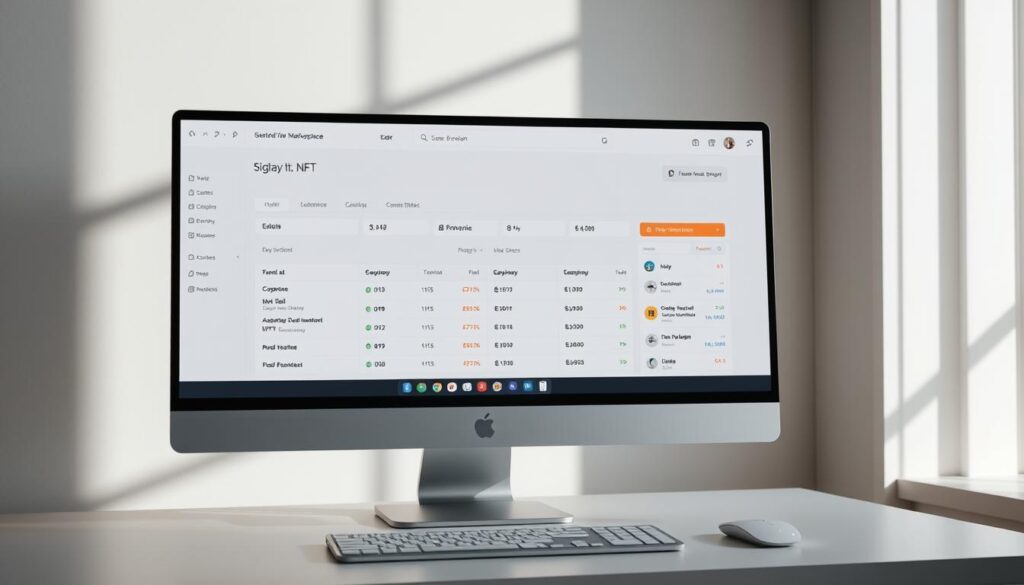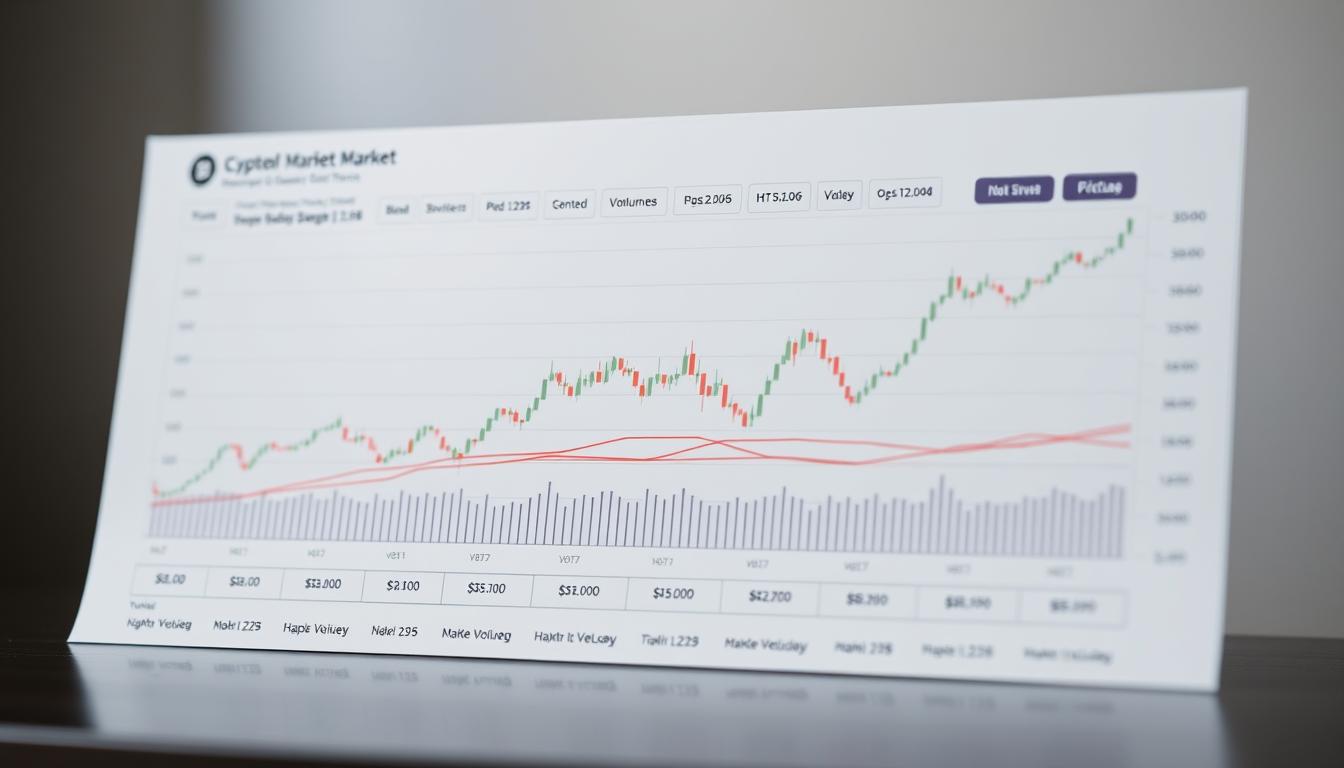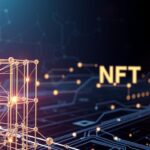Now Reading: How NFT Minting Process Gas Fees Impact Your Costs
- 01
How NFT Minting Process Gas Fees Impact Your Costs
How NFT Minting Process Gas Fees Impact Your Costs
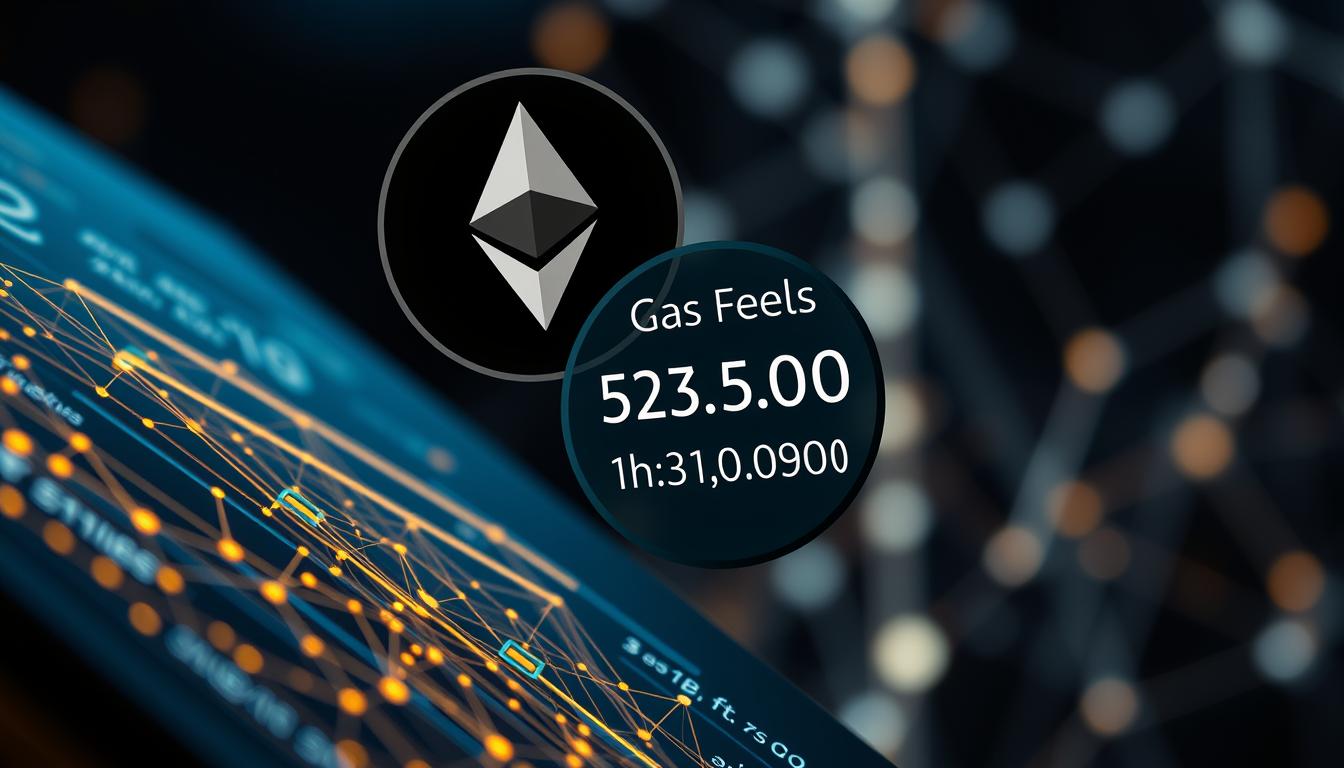
Entering the world of digital collectables involves more than just creative vision. Many creators discover that turning their artwork into blockchain tokens comes with unexpected financial considerations. Understanding these expenses is crucial for anyone looking to launch their digital projects successfully.
The charges associated with creating blockchain-based assets can vary significantly. Network conditions and platform choices play a major role in determining your final expenditure. These fluctuating costs make budgeting essential for artists and businesses alike.
This guide explores the complete financial landscape of digital asset creation. You’ll learn practical strategies to manage expenses while maintaining quality. Whether you’re launching your first piece or a large collection, financial planning ensures your project’s viability.
Key Takeaways
- Network charges directly influence your total creation expenses
- Blockchain selection significantly impacts your budget requirements
- Platform fees contribute substantially to overall project costs
- Timing your transactions can lead to substantial savings
- Different marketplaces offer varying fee structures for creators
- Understanding cost components helps with accurate budget planning
- Strategic planning minimises expenses while maintaining quality standards
Introduction: Understanding the NFT Landscape
Digital creators across multiple industries are discovering new revenue streams through tokenised assets. The landscape for non-fungible tokens continues to evolve, offering unprecedented opportunities in art, music, and virtual spaces. This transformation represents a fundamental shift in how we authenticate and trade unique digital content.
The ecosystem encompasses various participants including artists, collectors, and platform providers. Each group plays a crucial role in the market’s ongoing development and expansion. Understanding these relationships helps creators navigate the complex digital asset environment more effectively.
For businesses and individuals entering this space, comprehending the complete cost structure is essential. From initial creation expenses to ongoing marketplace charges, proper financial planning ensures project viability. The competitive nature of today’s market demands strategic thinking about blockchain selection and positioning.
Current trends show the space has matured significantly since its inception. Successful projects now require careful consideration of technical and financial aspects. This broader context provides the foundation for making informed decisions about digital asset creation and management.
Understanding NFT Minting Process Gas Fees
Behind every successful digital asset launch lies a crucial understanding of blockchain transaction costs. These computational charges represent payments to network validators for processing your creation activities.
Network charges fluctuate based on demand and platform selection. During high activity periods, costs can spike dramatically compared to quieter times. This variability makes timing your activities particularly important.
The Ethereum network demonstrates this dynamic clearly. Creation expenses might reach hundreds of dollars during congestion but drop to minimal amounts during low usage. This difference directly impacts project budgets.
Understanding these computational expenses is essential for profitability. Large collections accumulate significant costs that affect your bottom line. Strategic planning helps manage these variable charges effectively.
Real-time tracking tools allow creators to monitor network conditions. This knowledge helps optimise timing for cost-efficient operations. Proper budgeting prevents unexpected expenses from undermining project viability.
Overview of the NFT Minting Process and Associated Costs
Turning artistic concepts into verifiable digital collectables demands comprehension of key technical procedures. This transformation from idea to authenticated asset involves specific steps that creators should understand thoroughly.
Defining NFT Minting
The fundamental procedure converts any digital file into a unique blockchain-based token. This recording method establishes permanent ownership verification on a distributed ledger.
Each digital asset receives an identifier that distinguishes it from all other tokens. The immutability of this system preserves integrity and value over time.
Initial Costs and Network Charges
Various expenses accompany the creation of blockchain tokens. These include computational validation fees and potential platform setup charges.
Marketplace listing costs also contribute to the total expenditure. Understanding this financial landscape helps creators make informed decisions.
| Blockchain Network | Average Creation Cost | Transaction Speed | Platform Compatibility |
|---|---|---|---|
| Ethereum | £15-£100+ | Moderate | High |
| Polygon | £0.01-£0.50 | Fast | Medium |
| Solana | £0.001-£0.10 | Very Fast | Growing |
| Flow | £0.05-£2.00 | Fast | Specialised |
Network conditions significantly influence final expenses. Strategic timing and platform selection can optimise financial outcomes for creators.
The Role of Gas Fees in NFT Transactions
When interacting with distributed ledger systems, participants encounter essential transaction costs that maintain network integrity. These computational charges represent the economic backbone of blockchain operations.
What Are Gas Fees?
Gas fees serve as compensation for network validators who process and verify operations. They represent the computational effort required to execute smart contracts and record transactions permanently.
These charges are denominated in the blockchain’s native cryptocurrency. Users essentially pay for the privilege of having their operations included in the distributed ledger.

Effects of Network Congestion
Network congestion occurs when transaction volume exceeds processing capacity. During peak periods, users compete for limited block space by offering higher compensation.
This competitive environment causes transaction costs to surge dramatically. Understanding this relationship helps creators implement strategic timing approaches for cost efficiency.
| Network Condition | Typical Gas Fee Range | Transaction Speed | Creator Impact |
|---|---|---|---|
| Low Congestion | £2-£10 | Fast | Minimal |
| Moderate Activity | £10-£50 | Moderate | Manageable |
| High Congestion | £50-£200+ | Slow | Significant |
| Extreme Peak | £200-£500+ | Very Slow | Prohibitive |
Different blockchain networks handle congestion with varying efficiency. Some maintain stable costs even during high-volume periods through advanced consensus mechanisms.
Blockchain Networks and Their Minting Cost Structures
Choosing the right distributed ledger for your digital assets involves careful analysis of multiple factors. Different blockchain networks offer varying benefits that affect your project’s financial requirements.
Understanding these differences helps creators make informed decisions about platform selection. The choice impacts both initial expenses and long-term project viability.
Ethereum vs. Alternatives
Ethereum remains the industry standard with robust infrastructure and widespread adoption. However, its computational charges can reach hundreds of dollars during network congestion.
Alternative blockchain networks provide compelling options for budget-conscious creators. Platforms like Solana and Polygon offer significantly reduced expenses while maintaining functionality.
Cost Comparison of Leading Blockchains
When evaluating blockchain networks, creators should consider both immediate and long-term factors. Transaction speeds and community support play crucial roles alongside financial considerations.
The table below illustrates key differences between major platforms:
| Blockchain Network | Average Creation Cost | Transaction Speed | Marketplace Support |
|---|---|---|---|
| Ethereum | $50-$500+ | Moderate | Extensive |
| Solana | ~$0.015 | Very Fast | Growing |
| Polygon | Fast | Good | |
| Binance Smart Chain | $0.15-$1.00 | Fast | Moderate |
| Tezos | ~$0.50 | Fast | Specialised |
Binance Smart Chain offers an affordable middle-ground option with global reach. Its integration with the extensive Binance ecosystem provides additional advantages for international projects.
Emerging platforms like Cardano and Algorand present exceptionally low transaction fees. These blockchain networks appeal to creators prioritising cost efficiency above all other factors.
Factors Influencing Overall NFT Minting Costs
Multiple interconnected elements determine the final expenditure for turning digital files into authenticated tokens. Understanding these components helps creators develop accurate budget projections.
Your digital asset’s characteristics significantly impact creation expenses. Larger files demand more blockchain storage space and computational power.
Digital File Size and Complexity
High-resolution images and complex 3D models generate higher charges than simple graphics. Interactive elements and dynamic metadata require additional resources.
Sophisticated smart contract functionality increases validation requirements. This complexity directly affects your project’s financial requirements.
Platform and Marketplace Charges
Marketplace fees represent another crucial cost layer. Most platforms impose listing charges and sales commissions.
OpenSea charges 2.5% per sale while SuperRare takes 3%. These ongoing expenses must factor into your pricing strategy.
Account setup fees and service charges vary between platforms. Comparing marketplace structures helps optimise your financial outcomes.
Strategies to Minimise NFT Minting Costs
Forward-thinking creators employ strategic approaches to minimise blockchain expenses. Several proven methods can dramatically reduce expenditure without compromising quality.
These techniques help artists and businesses maintain financial viability. They work across different platforms and market conditions.
Utilising Lazy Minting
Lazy minting represents a revolutionary cost-saving approach. It delays the actual blockchain recording until purchase occurs.
The buyer pays the associated transaction fees instead of the creator. This eliminates upfront expenses for digital asset projects.
This method is ideal for testing new markets or experimental concepts. It allows creators to gauge interest without financial risk.
Benefits of Batch Minting
Batch minting groups multiple tokens into a single transaction. This reduces the total number of fees incurred.
For large collections, this approach can cut expenses by 50-80%. It’s the preferred method for serious commercial ventures.
The efficiency gains are substantial for projects with hundreds of assets. Combined with other strategies, savings compound significantly.
| Strategy | Cost Reduction | Best For | Implementation Complexity |
|---|---|---|---|
| Lazy Minting | 100% upfront | Market testing | Low |
| Batch Minting | 50-80% | Large collections | Medium |
| Off-peak timing | 30-60% | All projects | Low |
| Blockchain selection | 70-95% | Budget-conscious | High |
Combining multiple approaches yields the best results. Strategic planning makes digital asset creation accessible to all budgets.
Leveraging Layer-2 Scaling Solutions for Cost Reduction
Layer-2 technologies represent the next evolution in making blockchain operations more accessible and affordable for content producers. These advanced networks process transactions off the main chain while maintaining security through Ethereum’s established infrastructure.

This approach dramatically reduces network congestion and associated expenses. Creators benefit from significantly lower transaction fees while preserving compatibility with existing tools and marketplaces.
Key Advantages of Layer-2 Networks
Secondary networks offer substantial financial benefits for digital projects. Expenses typically run 90-99% lower than mainchain operations.
Integration remains seamless with popular wallets and established platforms. This allows artists to reach Ethereum’s extensive user base without sacrificing cost efficiency.
The technical process has become increasingly user-friendly. Simple bridging mechanisms make these solutions accessible to creators with varying technical expertise.
Real-World Examples and Use Cases
Major brands have successfully adopted these cost-effective approaches. Companies like Adidas and Starbucks choose Polygon for their digital initiatives.
Artists increasingly favour Layer-2 platforms for large collections. Reduced expenses enable more experimental projects and broader audience appeal.
These solutions represent a compelling middle ground for creators seeking affordable digital asset creation without compromising market reach. The technology continues maturing as adoption grows across the industry.
Impact of Smart Contract Deployment on Minting Expenses
Building unique digital collectables often requires custom programming that operates on the blockchain. This deployment represents a significant one-time cost for projects needing functionality beyond standard templates.
Expenses vary dramatically based on the contract’s complexity and the chosen platform. A simple agreement costs little, while sophisticated code with royalty mechanisms or complex logic demands more resources.
On networks like Ethereum, deploying a custom smart contract can cost several hundred dollars. During high network activity, this price can exceed $1,000, making it a substantial upfront investment.
Alternative platforms offer dramatically reduced deployment costs. Solana, Polygon, and Binance Smart Chain typically charge only a few dollars or less for this service.
This custom approach becomes essential for projects requiring specific features. These include allowlists, tiered pricing, or unique royalty arrangements not supported by standard tools.
Creators must weigh the benefits of bespoke contracts against the additional costs. Working with experienced developers can optimise code to minimise expenses while maintaining all desired functions.
Once live on the blockchain, a smart contract is permanent. Thorough testing and auditing before deployment are crucial to avoid costly mistakes or security issues.
Cost-Effective Features of Leading NFT Marketplaces
Platform fee structures play a decisive role in determining the long-term profitability of digital asset projects. Different marketplaces implement varying approaches to revenue generation that directly impact creator earnings.
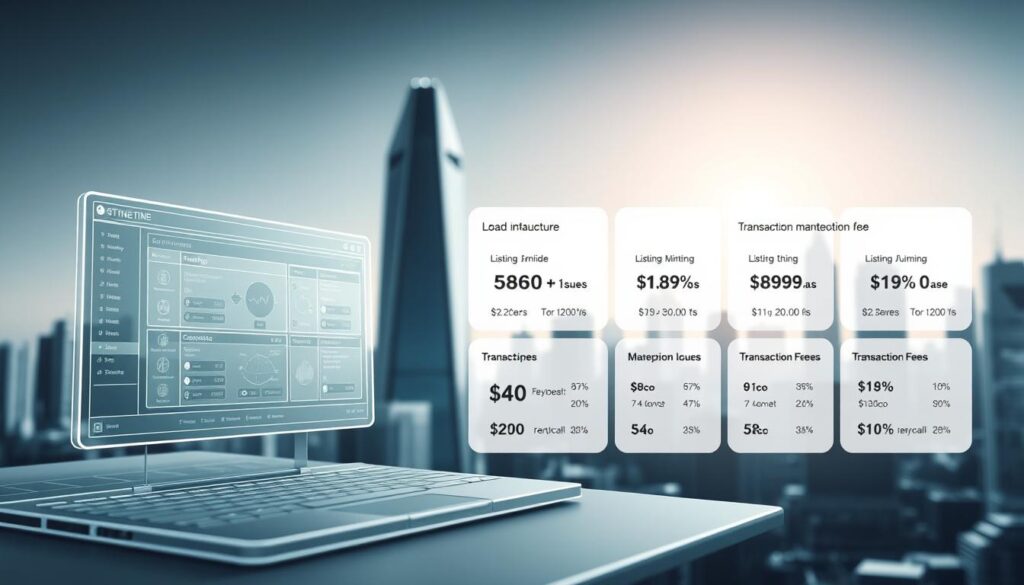
Understanding Listing Fees
Many platforms avoid upfront listing charges to encourage creator participation. This approach reduces barriers for new artists testing the digital space.
OpenSea exemplifies this model with no initial listing costs. Creators only face expenses when transactions occur successfully.
Sales Commissions and Final Transaction Costs
Commission structures represent the primary revenue source for most marketplaces. OpenSea charges 2.5% on secondary sales while Rarible matches this rate.
SuperRare positions itself as a premium platform with a 3% commission. This higher fee provides access to serious collectors and curated exhibitions.
Understanding these ongoing costs helps creators calculate true net proceeds. Strategic platform selection optimises financial outcomes for digital projects.
Optimising Minting Timing to Lower Gas Fees
The temporal aspect of blockchain interactions offers significant opportunities for cost optimisation. Strategic scheduling can dramatically reduce expenses associated with digital asset creation.
Off-Peak Minting Strategies
Network congestion directly influences transaction costs on major blockchain platforms. During peak activity periods, prices surge as users compete for limited processing capacity.
Historical data reveals consistent patterns in network usage. Fees typically reach their lowest points during weekends and late-night UTC hours.
Tools like Etherscan’s Gas Tracker provide real-time monitoring capabilities. These platforms help creators identify optimal windows for cost-efficient operations.
| Time Period | Typical Fee Range | Potential Savings | Recommended Action |
|---|---|---|---|
| Weekday Business Hours | £50-£200+ | Base Level | Avoid if possible |
| Weekend Mornings (UTC) | £15-£40 | 60-80% | Ideal for large collections |
| Late Night (2-6 AM UTC) | £5-£20 | 75-90% | Best for urgent transactions |
| Major Event Periods | £100-£500+ | Negative | Complete avoidance recommended |
Advanced planning using historical patterns informs project scheduling effectively. Creators should avoid known high-congestion periods like major project launches.
Balancing marketing timing against cost considerations requires careful strategy. Sometimes pre-creating assets before announcements offers the best compromise.
Emerging Innovations in NFT Minting Technology
Innovative approaches to token creation are dramatically altering the financial landscape for digital projects. New technical solutions address previous cost barriers while expanding creative possibilities.

These developments make large-scale projects economically viable. Creators can now explore applications previously considered too expensive.
Compressed NFTs and Their Benefits
Compressed digital assets represent a significant breakthrough for blockchain networks. This technology reduces storage requirements by using efficient data formats.
The approach cuts creation expenses substantially while maintaining full functionality. High-volume applications benefit most from these savings.
Dynamic Metadata and Smart Contract Optimisation
Dynamic metadata enables tokens to evolve based on external triggers. This creates living digital collectables that change over time.
Optimised smart contracts use fewer computational resources. Efficient coding techniques directly lower transaction expenses for creators.
The Influence of Blockchain Selection on Your Project Budget
The economic landscape of digital collectable creation varies dramatically across different blockchain environments. Your platform choice represents perhaps the single most impactful decision affecting overall project budgets.
Cost differences between platforms can range from pennies to hundreds of dollars per token. This variation fundamentally alters project economics and feasibility for creators.
The choice between established platforms and emerging alternatives involves complex trade-offs. You must balance creation expenses against marketplace liquidity, collector base size, and technical capabilities.
High-cost blockchains offer undeniable advantages including the largest marketplace ecosystem. These platforms potentially justify higher expenses for premium projects targeting serious collectors.
Low-cost alternatives enable projects that would be economically impossible elsewhere. They’re particularly suitable for large collections or works targeting price-sensitive audiences.
Budget planning must account for ongoing transaction fees beyond initial creation costs. These cumulative expenses vary significantly across different platforms.
- Technical considerations like transaction speed and reliability
- Marketplace availability and community size
- Long-term platform viability and upgrade roadmaps
- Target audience preferences and technical requirements
Optimal selection requires aligning multiple factors to identify the platform offering the best overall value proposition. The lowest-cost option isn’t always the most financially sound choice long-term.
Benefits of Creating Optimised Digital Assets
Optimising your digital files before they touch the blockchain unlocks significant financial advantages. Careful preparation of file size, metadata, and technical specs yields substantial savings. This proactive approach maintains artistic quality while reducing expenses.
Compressing images and videos to reasonable sizes is crucial. It lowers on-chain storage needs without sacrificing quality for the intended audience. This simple step directly impacts the final cost for creators.
Using off-chain storage like IPFS for large media files is best practice. Only essential metadata and unique identifiers need permanent blockchain recording. This architecture dramatically cuts computational requirements.
Simplifying smart contract logic avoids unnecessary computations. Efficient code pathways accomplish necessary functions with minimal resource use. Technical optimisation benefits extend to future transactions, making transfers and listings cheaper for collectors.
Working with developers identifies hidden optimisation opportunities. Their expertise can achieve substantial cost reductions through smarter architectural decisions. Balancing optimisation with functionality is key to maintaining a valuable user experience.
Creating efficient digital assets demonstrates technical sophistication. It shows consideration for collectors who bear secondary transaction costs. This careful approach can enhance a project’s reputation within the community.
Making Informed, Cost-Effective Decisions in NFT Creation
Smart financial planning separates successful digital projects from costly failures. Understanding expenses becomes an ongoing strategic initiative rather than a one-time calculation.
Accurate budget planning requires comprehensive cost accounting. This includes initial creation expenses, marketplace fees, and contingency buffers.
Budget Planning and Technical Expertise
Technical knowledge proves invaluable for navigating complex digital asset creation. Experienced developers identify saving opportunities that might escape novice creators.
They implement efficient solutions while maintaining desired functionality. This expertise often pays for itself through avoided mistakes and optimised operations.
Collaborating with Experienced Developers
Professional partnerships provide access to specialised blockchain knowledge. These collaborators offer guidance beyond technical implementation.
They help with strategic decisions about platform selection and launch timing. This holistic approach maximises project value beyond mere cost reduction.
| Collaboration Type | Cost Impact | Best For | Expertise Level |
|---|---|---|---|
| Consultation Only | Low | Small Projects | Basic Guidance |
| Partial Development | Medium | Medium Collections | Technical Support |
| Full Partnership | High | Enterprise Projects | Comprehensive |
Balancing expenses with quality requires informed decision-making. The right technical partnership transforms financial planning from guesswork into strategy.
Conclusion
Successfully launching digital collectables requires more than artistic talent—it demands financial intelligence. Understanding how blockchain expenses impact your project’s viability separates professional creators from hopeful amateurs.
The landscape offers multiple pathways to manage these costs effectively. From strategic timing to platform selection, informed decisions dramatically improve project economics. Knowledge transforms financially challenging concepts into viable ventures.
As technologies evolve, staying informed about new platforms and best practices remains essential. Balancing cost considerations with quality and functionality ensures long-term success. This knowledge empowers creators to navigate the digital landscape confidently.
Whether launching a single piece or large collection, applying these strategies supports both creative vision and business objectives. The future promises continued innovation in making digital asset creation accessible to all budgets.
FAQ
What exactly are gas fees in the context of creating a non-fungible token?
Gas fees are the payments required to execute operations on a blockchain network, such as deploying a smart contract or recording a transaction. Think of them as the computational energy cost for validating and securing your digital asset on the ledger. These charges vary based on network demand.
How does choosing a blockchain like Binance Smart Chain affect my expenses?
Selecting a blockchain like Binance Smart Chain can lead to significantly lower transaction fees compared to networks like Ethereum. This is due to its different consensus mechanism and architecture, which often results in more affordable minting and trading costs for your digital collectibles.
Can the size of my digital file influence the cost of creating an NFT?
Yes, the size and complexity of your digital file can impact the final cost. Larger files require more data to be processed and stored on the blockchain network, which can increase the gas fee. Optimising your asset’s size before minting is a practical way to manage expenses.
What is ‘lazy minting’ and how can it save me money?
Lazy minting is a technique where the non-fungible token is not fully recorded on the blockchain until it is purchased. This defers the gas fee to the buyer, eliminating the upfront cost for the creator. It’s a popular feature on many modern NFT marketplaces to encourage creation.
Why do transaction costs fluctuate so much?
Transaction costs, or gas prices, are highly dynamic and are primarily driven by network congestion. When many users are competing to have their transactions processed simultaneously, fees rise. Minting during off-peak hours can be a strategic way to secure lower charges.
What are the benefits of using a Layer-2 scaling solution?
Layer-2 solutions, such as Polygon or Arbitrum, operate on top of main blockchains like Ethereum. Their key advantage is drastically reducing transaction costs and increasing speed by processing data off the main chain, while still benefiting from its security.


